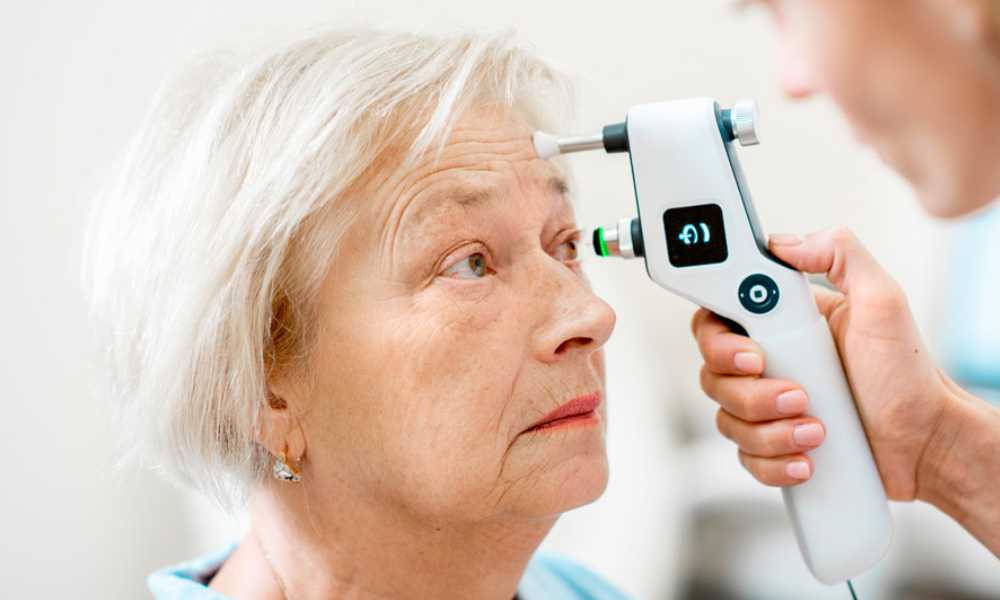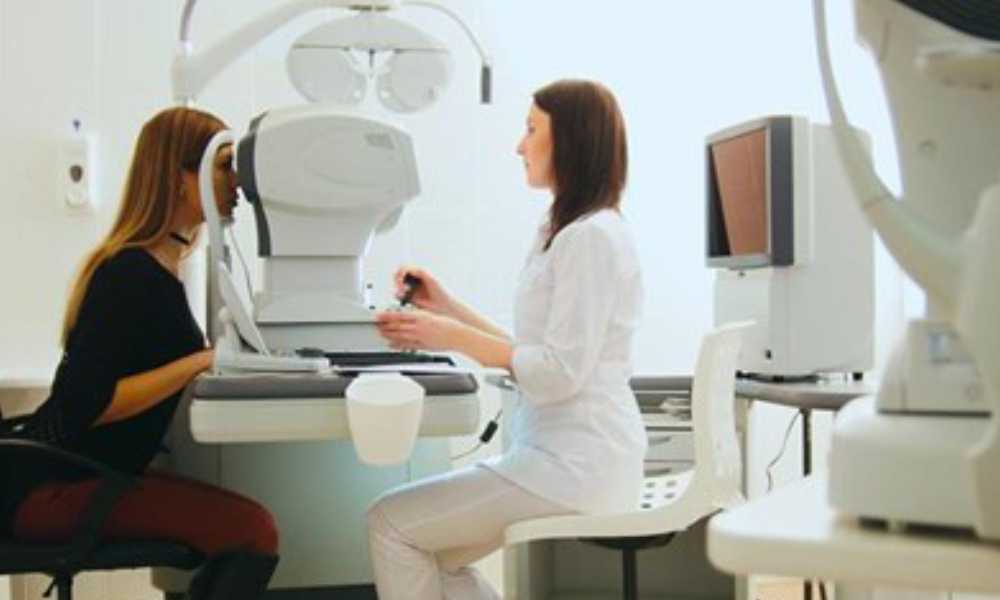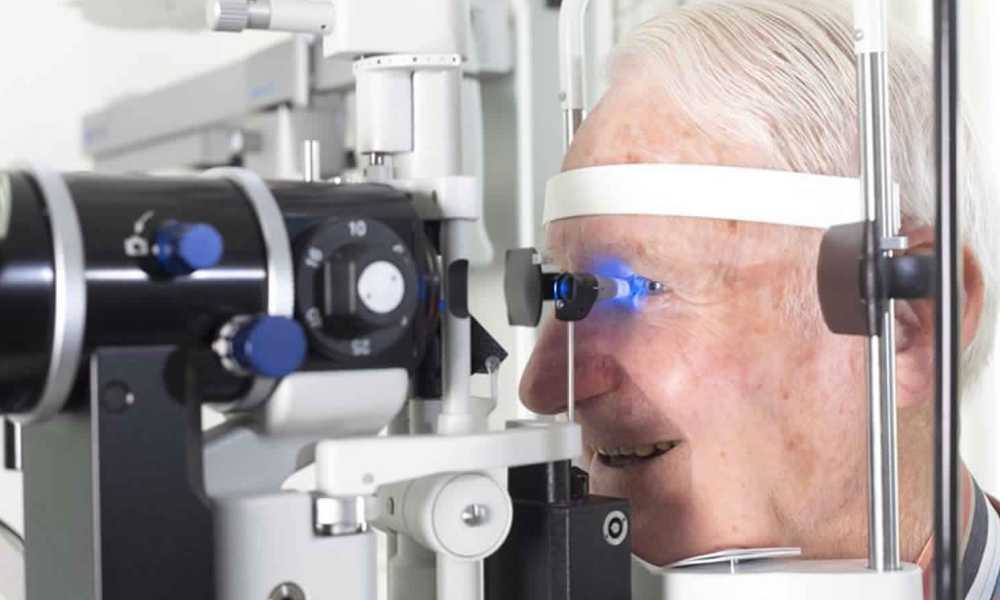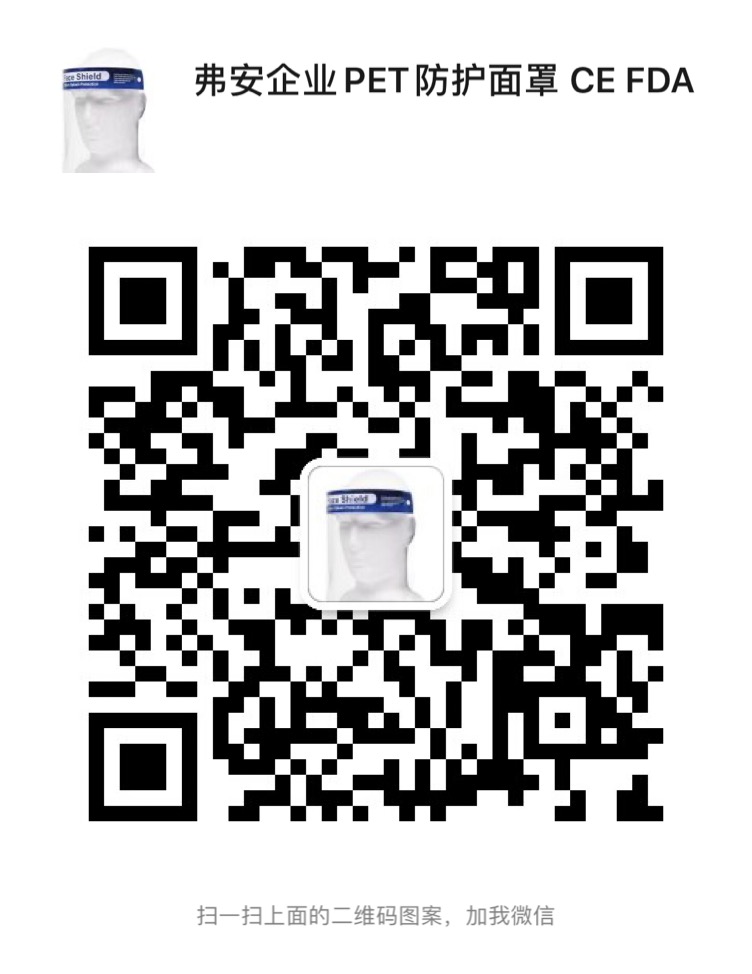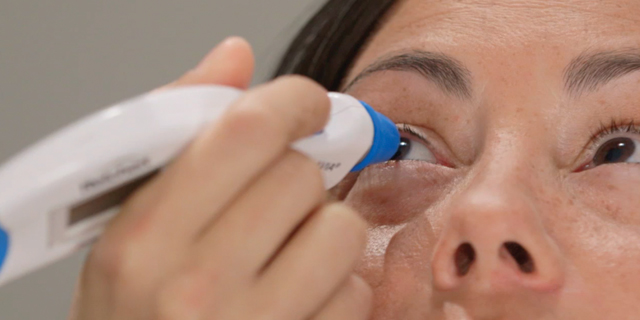
Tonometry, the measure of intraocular fluid pressure, is one of the most important aspects of ophthalmology. By measuring the level of pressure in the eye, ophthalmologists can determine whether a patient may have glaucoma, a condition in which damage to the optic nerve results in blindness. By diagnosing and intervening, eye doctors can hope to stop the onset of glaucoma and protect what vision the patient still has.
The ways of measuring intraocular pressure vary. Different ophthalmologists may prefer different models of tonometers for their patients. Most popular is the Goldmann tonometer, an imposing piece of equipment that makes direct contact with the cornea. The extent to which the eye pushes back against the instrument denotes the level of pressure. Doctors consider Goldmann tonometry to be the most accurate, but owing to the nature of the instrument, anxious patients may flinch at contact or be unwilling to subject themselves to an eye exam. Patients with disabilities may not be able to position themselves before a Goldmann tonometer.
Bearing these objections in mind, doctors developed a handheld alternative to Goldmann tonometry. The Reichert Tono-Pen is the most popular handheld tonometer on the market. Knowing how to properly use the Tono-Pen will make screening for glaucoma accessible to more of your patients than ever before.
Calibration
Each day at an ophthalmologist’s practice must begin with proper calibration of the Tono-Pen. Though it must only be done once a day, it is very important to the functionality of the pen. Calibrate the instrument by pointing it downward and upward, as laid out in your user’s manual, and waiting for an affirmation from the digital display that the calibration was successful.
Preparation
The Tono-Pen uses disposable latex tip covers to make it easier for doctors to stay sanitary. Always use a new cover for each patient. Before proceeding, confirm that your patient does not have a latex allergy that would preclude examination with a Tono-Pen. Because the Tono-Pen does still make contact with the cornea, you must anesthetize the patient’s eye. Have a point of fixation available—something that your patient can train his or her eyes on to keep them still.
Examination
As the patient fixates on that target, carefully hold the Tono-Pen like a pencil and give yourself a clear look at both the patient’s eye and the tip of the pen, which should be as close to the center of the eye as possible. Keep the Tono-Pen parallel to the floor, with the tip about one-half inch from the cornea. Press the operation button once to initiate operation. If your Tono-Pen is properly calibrated, it will instruct you to begin. Following a beep, lightly touch the tip of the pen to the patient’s cornea several times, without pushing hard against the surface. After a signal, the Tono-Pen will display a reading of intraocular pressure. Repeat three times so the Tono-Pen can draw an average reading from a sample size of four.
For more information on how to properly use the Tono-Pen and tono-pen covers, consult the user’s manual of your Reichert Tono-Pen.

